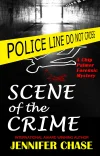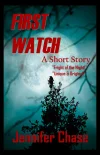Crime scenes aren’t as cut and dry as one might think. There are many variables and each one should be carefully identified, searched, documented, and processed correctly. The process doesn’t flow like the television shows or movies would like us to think.
Here’s a great article I wanted to share on “6 Mistakes to Avoid at Crime Scene” from a retired NYPD police detective and cold case expert, Joe Giacalone. It doesn’t get any better than learning it straight from the source.
***
6 Mistakes to Avoid at a Crime Scene
Crime Scene Mishaps:
By: Joseph L. Giacalone
You don’t get a chance to scream, “Do over!” like we did in the playground when it comes to criminal investigation. You only get one chance at it, so you have to do it right. Sometimes, doing something right is about learning what not to do. Crime scenes are so fragile that just about anything you do can cause crime scene contamination. The moment that the first uniformed officer enters the scene, it is contaminated.
Investigators must be ready for that question on the stand, “Was the crime scene contaminated before you arrived?” The answer to this question is always an unequivocal, “Yes, it was counselor, ” followed with an explanation if allowed. Crime scene contamination is unavoidable in law enforcement’s quest to render aid to the victim or obtain evidence. However, law enforcement can mitigate contamination by avoiding these six (6) deadly crime scene mistakes:
1. Not Controlling Police Personnel
The biggest problem in any crime scene are your fellow officers and therefore the most important appointment is to choose a “Gatekeeper.” The Gatekeeper’s job is to maintain the integrity of the scene, keep a list of who entered the scene and to prevent unauthorized personnel from gaining access. Some officers inadvertently contaminate the crime scene when they were assigned “the job,” while others like to show up to gawk. These officers pose the most difficult aspect of maintaining the crime scene for the gatekeeper.
2. Not Identifying Evidence
When processing a crime scene you have to have an open mind. If you are only looking for certain items, that is all you will find. Don’t miss the forest for the trees. If you think it has the potential to be probative evidence, then take it with you. There is nothing worse that finding out hours later that you left an important piece of evidence behind.
3. Not Documenting Interviews / Evidence / Etc.
If the investigator doesn’t take the time to document parts of the case then the entire case could be jeopardized. If the reports aren’t filled out, then that information will be lost forever. Worst yet, a poorly documented case opens it up to rightful criticism by the defense counsel. They will point out that certain things weren’t documented because they were exculpatory – meaning they would eliminate his / her client as a possible suspect. If it wasn’t recorded, it never occurred.
4. Not Taking Enough Photographs
The old mantra of a crime scene techs that I used to work with was, “Film is free.” The case investigator is the one that will be explaining themselves in a courtroom, so they need to learn how to take charge. You can never have enough photographs. More is better, for sure. Photographs play an important role as demonstrative evidence in a courtroom, a memory aid for investigators, a reference for cold case detectives and the opportunity to identify something that was originally missed.
5. Not identifying Secondary or tertiary crime scenes
The primary crime scene is always where the initial incident took place, unless it is a homicide, then it is where the body was found. Once again, the investigator cannot operate with blinders on. For instance, if the location is a “dump site” (murdered elsewhere and left the body in another location) then you have to think that a vehicle was probably used, therefore another potential crime scene. Other areas to think about are points of entry and egress, alleys, rooftops, elevator landings, staircases, etc. An investigator should always think of potential secondary and even tertiary crime scenes in every case.
6. Taking crime scene photos with people standing in the background
Nothing screams crime scene contamination or mismanagement more than rolls of film with both uniformed and investigators standing in the midst of the scene-some for no apparent reason. Crime scene photos should be taken when the scene is as pristine as possible. The proper way a crime scene should be documented is: Photo, Sketch, Search and Collect.
By no means is this an all and inclusive list of what could go wrong at a crime scene, however, these are the six (6) most likely scenarios. In addition, I have one more tip to share and it has to do with EMTs. Always ask the EMTs to clean their stuff up before leaving the scene. If not, you run the risk of having blue gloves, plastic wrappings, bandage wrappings, etc. flying around your crime scene. Also, if possible, ask them not to cut through the bullet / knife holes in the victim’s shirt when they are removing his / her clothes.
By the way EMT stands for: Evidence Mangling Technician
Related Articles:
Crime Scene Contamination and the Amanda Knox Case
3 Ways the Police Lawfully Obtain DNA Exemplars
911 Tapes: Cold Case Artifacts
Detectives Love Blue Star Blood Identifying Agent
Cause of Death vs. Manner of Death
(Re-posted by permission from http://www.coldcasesquad.com)
***
Joseph L. Giacalone
Criminal Investigation and Cold Case Expert
Author, Speaker, Trainer and Blogger
 Joseph L. Giacalone is a retired NYPD Detective Sergeant who held many prestigious positions during his more than 20 year career. Most of his career was dedicated to conducting and supervising major criminal investigations. Joe was the Executive Officer of the 110th Precinct Detective Squad in Queens and the Commanding Officer of the Bronx Cold Case Squad. He was responsible for managing thousands of cold case homicides and missing persons cases. While working, Joe found the time to obtain a Master of Arts in Criminal Justice with a Specialty in Crime and Deviance from John Jay College of Criminal Justice in 2005.
Joseph L. Giacalone is a retired NYPD Detective Sergeant who held many prestigious positions during his more than 20 year career. Most of his career was dedicated to conducting and supervising major criminal investigations. Joe was the Executive Officer of the 110th Precinct Detective Squad in Queens and the Commanding Officer of the Bronx Cold Case Squad. He was responsible for managing thousands of cold case homicides and missing persons cases. While working, Joe found the time to obtain a Master of Arts in Criminal Justice with a Specialty in Crime and Deviance from John Jay College of Criminal Justice in 2005.
For more information or to contact Joe :
Phone: 516-557-9591
Blog: http://www.coldcasesquad.com/
Email: joe@joegwrites.com / coldcasesquad@gmail.com
Author page: http://www.joegwrites.com
Twitter: @JoeGiacalone / @ColdCaseSquad




































Thank you for sharing all of this. Invaluable for a crime author like myself.
LikeLike
As a trained Naval photographer, a few of these parallel what a good photographer does in taking shots anywhere: take more photos than you need as only a few good ones may come of it, always frame your shot with the focus of the subject and eliminate any distractions from your theme, look outside the subject area for other unique points of interest you may have missed, and take shots from different angles as you never know what may appear in one shot and not another that is revealing.
LikeLike
Pingback: Investigating Cold Cases with New Forensic Methods | Author Jennifer Chase
Pingback: Can You Tell a Lie and Not Get Caught? | Author Jennifer Chase
Reblogged this on Author Jennifer Chase and commented:
My friend and cold case detective Joe Giacalone is a great resource for writers and cops. I wanted to repost this great guest article on what to avoid at a crime scene.
LikeLike
This is exceptionally good information. Very glad that I found this article!
LikeLike
Thank you Robertson! I’m so glad that you stopped by.
LikeLiked by 1 person
So glad I found this (and shared it on FB as well). Wonderful tips to keep in mind!
LikeLike
Thank you for stopping by and sharing 🙂
LikeLike
Pingback: Investigating Cold Cases with High-Tech Forensic Methods | Author Jennifer Chase